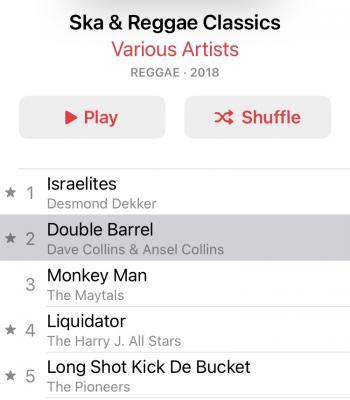Do you worry that important report you've written, speech you've put together, or even story you've crafted won't get the full attention it deserves?
Here's a way to ensure none of your work is wasted, and the audience follows every step of your argument.
I bought a new album over Xmas, mainly as a running track.
Why did I buy the album?
Partly because it takes me back to scooter rally days, and dancing my youth away (badly, but so it goes with me.)
Yet there's something cutely clever about the track list, which may not be immediately obvious.
Have a look. Any guesses?
If you search for ska music, as I did, it's one of a few albums that pops up.
So, why did I choose this one?
- The answer is because the songs are listed in news order.
That's the most well known first. The ones a viewer is likely to remember fondly, and so be inclined to purchase.
In fairness, the other tunes on the album are great as well.
But the first five, those you pick up in a search, are the best of the best.
That's the news order. Going with your most important, most interesting, most striking information first.
And it's absolutely critical in the modern world, where attention spans are short.
You have to grab an audience from the start, or you risk never grabbing them at all.
The news order works anywhere.
For example, it's just the same if I have to introduce myself at a business networking event, and only have a few seconds to do so.
- I run my own business communications consultancy, media and design agency, Creative Warehouse.
- I teach communication skills in government and at the University of Cambridge.
- I was a BBC News Correspondent for 20 years.
- I'm a writer, with my first book on all you need to know about business communication recently released.
The most important, most striking, most interesting information first.
Structure your communications in that way and you're far more likely to grab and retain an audience's interest, whatever your message.
By the way, as a New Year's offer to try to help some businesses through this latest lockdown, at Creative Warehouse, we're offering free support to a select few.
See our website for more details, and feel free to get in touch if we might be useful.
